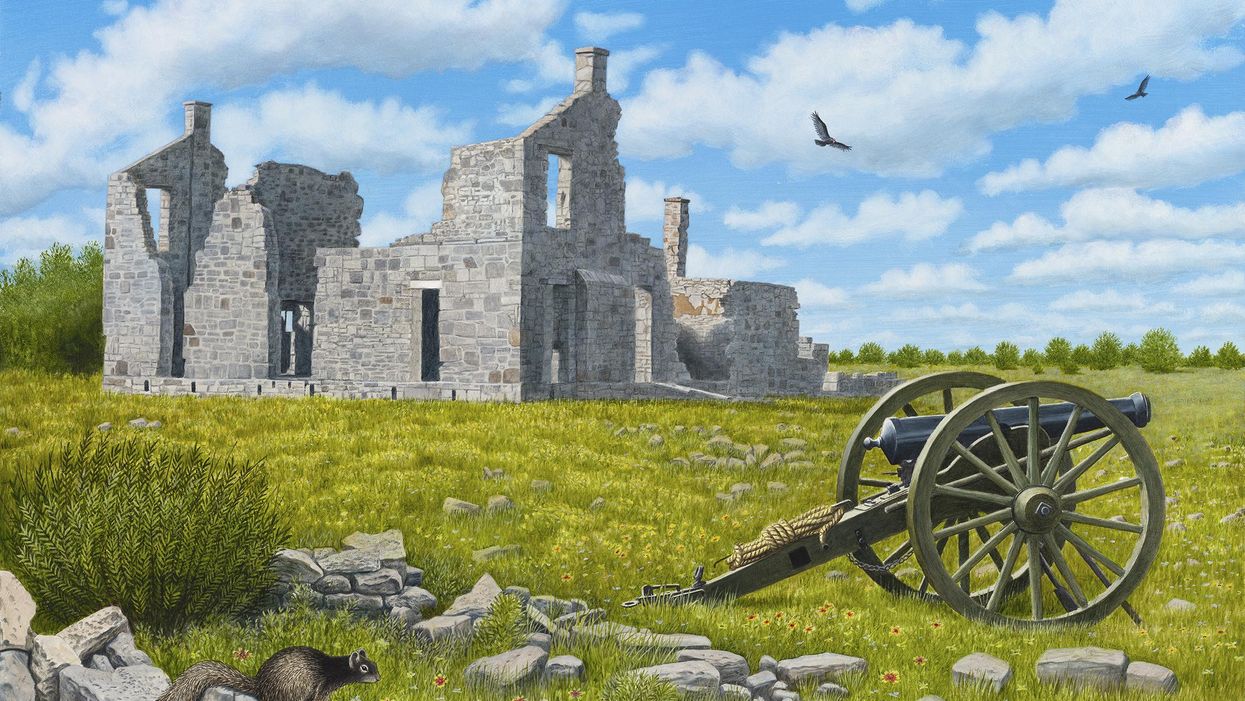Pop-Up Show Celebrates Texas’ Picture-Perfect State Parks Ahead of Milestone Anniversary

"Fort McKavett State Historic Site" by William Montgomery
THE TEXAS STATE Parks system marks its 100th anniversary in 2023. To celebrate this historical occasion, Foltz Fine Art presents The Art of Texas State Parks, a “pop-up” exhibition of paintings of state-park sites by a diverse selection of contemporary Texas artists.
The show is part of a collaborative, commemorative endeavor by Foltz Fine Art, Texas Parks and Wildlife Department, the Meadows Center for Water and the Environment, Texas State University, Texas A&M University Press, Bullock Texas State History Museum, and Texas Capitol. The idea is to create an artistic “visual record” of Texas State parks, and the presenting organizations will tour the exhibition as well as publish a book, The Art of Texas State Parks, in 2023. Twenty-five percent of the profits from sales of the paintings in the show will go to the Texas Parks and Wildlife Foundation, benefitting Texas State Parks. The show at Foltz runs through Aug. 27.
If you’re one of those people who use a sketchpad (rather than a smartphone) to capture your experience of the natural world, this show is for you. The artists on display are among a total of 30 contemporary Texas artists included in the forthcoming book, and represent a cross-section of styles and perspectives, though the chosen medium throughout is paint and the canvas.
Titled “Slippery Step,” Fort Worth artist Pat Gabriel’s landscape painting of a large, circular swimming pool in Balmorhea state park, with its metal handrails leading down into the water, is a beautiful, though somewhat eerie, image. (Where are the swimmers? The lifeguards?)
Tyler-born painter and printmaker William Montgomery’s “Fort McKavett State Historic Site” is a straight-forward rendition of the 150-year-old a military post, with blue skies and hints of animal life and blooming flowers providing a peaceful contrast to the 19th-century cannon and the ruins of the West Texas fort. Meanwhile, Billy Hassell’s “Red-Bellied Wood Red-Bellied Woodpecker With Mallards,” is a caught-in-the-moment rendition of bird (and duck) life, imaginatively, and accurately rendered in a spectrum of vibrant colors.
Going back to 1923, when the State Parks Board was established, there was not much land in the Lone Star State available or suitable for public parks. In the 1930s, projects of the federal Civilian Conservation Corps, one of the New Deal work programs created by FDR to put people to work during the Great Depression, added to the state's parklands. Over time, several generations of generous Texans donated lands as well; today, the state parks system occupies 603,748 acres. The Art of State Texas Parks will no doubt create even more awareness of the state’s many parks and natural getaways.

"Red-Bellied Woodpecker with Mallards, Daingerfield State Park" by Billy Hassell

"Blinn Trail Rapids, Garner State Park" by David Caton

"Nature as It Is, Hill Country State Natural Area" by John Hanna

"Slippery Step, Balmorhea State Park" by Pat Gabriel

"Cascade, McKinney Falls State Park" by Ric Dentinger

